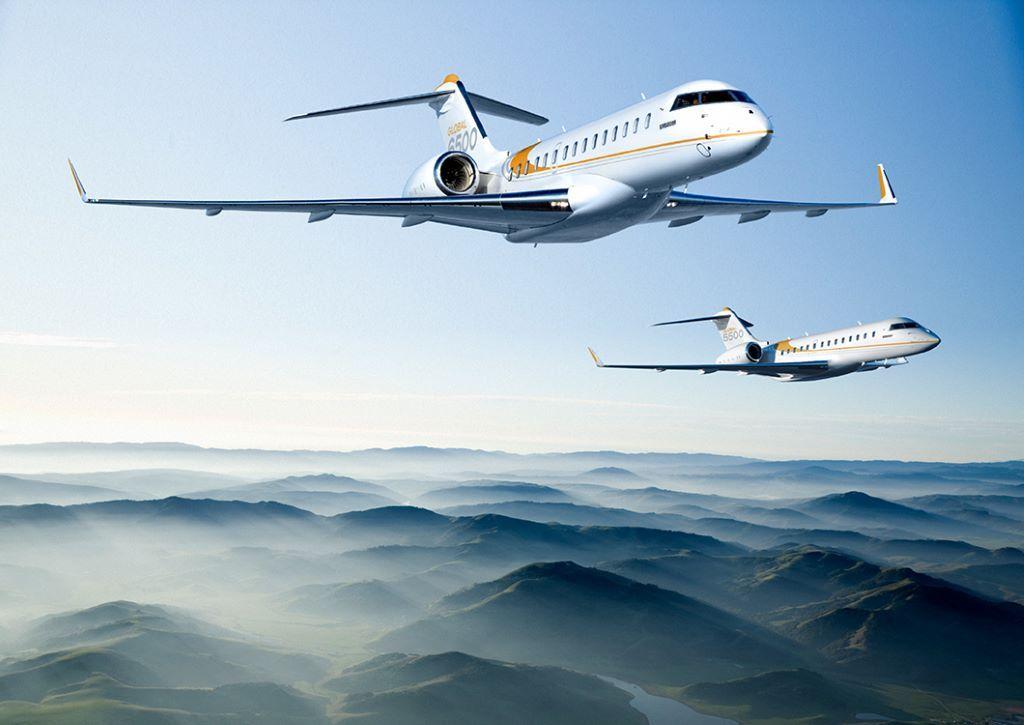
Bombardier has completed Environmental Product Declarations (EPDs) on four of its business jet products in an effort to be transparent in its sustainability efforts, as concern for the environment grows.
Ultimately, Bombardier plans to complete EPDs on all its jets by 2025.
Most recently, Bombardier completed the analysis of its long-range Global 5500 and Global 6500 aircraft, following product declarations for the Global 7500 and Challenger 3500.
The declarations follow years of scientific research and analysis and provide detailed information about each aircraft’s environmental footprint across its complete life cycle, the company says. They adhere to the International Standards ISO 14020 as developed by the International Organization for Standardization, which specifies the requirements.
It’s an important piece of Bombardier’s sustainability efforts, which include analyzing more than 140,000 aircraft parts, including those of its suppliers, to complete the declarations, officials say.
“Sustainability has been on our mind for quite an extended period of time at Bombardier,” says Mathieu Noel, Bombardier director of product strategy, industrial design and sales engineering. “We’ve had the intention to produce planes and have a company that has the smallest environmental impact for quite some time.”
The EPDs are important, Noel says. “We want the customer to be educated in making the purchase decision,” Noel says. “We want them to reflect on their impact. We want them to be conscious about the choices that they’re making.”
It’s a voluntary approach, he notes.
Bombardier’s Eco-design team, now called its Product Sustainability and Strategy team, was formed at the beginning of the ultra-long-range Global 7000 program, now the Global 7500.
“We saw that as a good opportunity to make not only an aircraft that’s a game changer when it comes to its range, speed and other metrics that you’re familiar with, but also to really, really change the game when it came to environmental impact,” Noel says of the Global 7500. “We were involved in all the studies when it came to trade studies and key product decisions.”
The company reviewed more than 200,000 aircraft parts from 45 Tier-1 suppliers over the development of the Global 7500, which led to a third-party verified report on its environmental footprint shortly following its entry-into-service, the company says.
“It was the first in the industry and since then, it’s been again our top propriety at Bombardier to create products that have less and less of an environmental impact over time,” Noel says.
Bombardier completed an environmental product declaration in 2022 on the Challenger 3500 super mid-sized jet. In May 2023, Bombardier announced EPDs for the Global 5500 and Global 6500 with an analysis of more than 140,000 parts per program.
“We’re well on our way to hit our target of having one for all of our products by 2025,” Noel says.
From a design analysis, the Global 5500 and Global 6500 business jets feature better fuel efficiencies of up to 13% than their predecessors and include redesigned wings and new Rolls-Royce Pearl engines.
In the long term, the company champions sustainability, along with the rest of the industry, with a commitment to a goal of net zero carbon emissions by 2050, he notes. Long term, Bombardier is involved in its EcoJet research program and aims to invest more than 50% of its research and development funds into greener aircraft technologies.
“But we don’t want to have just lofty goals; we want to take steps to get there,” Noel says. Today, the company is using sustainable aviation fuel in its operations along with a book-and-claim system, has introduced sustainable materials as choices on its aircraft and developed an Eco-app for the Challenger 3500.
Completing an EPD is a rigorous process, he says. “We go through aircraft parts one by one and measure and make the right assumptions and validate their environmental impact from the sourcing of the material to the assembly of the parts and the components to the main aircraft assembly, the entire operations and maintenance of the life of the aircraft all the way to the end of life—which part can be recycled, which one goes to waste,” Noel says.
In its research, Bombardier measures items, such as the use of water, emissions and energy consumption, he says. And it issues an environmental product declaration containing all of the information.
“It’s important for us because it’s about owning the challenge that our industry faces,” Noel says. “It’s important for us to set the standard, set the bar high and measure what we’re doing and attack it.”
EPDs are beginning to become a standard across many industries. Noel recently saw one for office chairs, for example.
It’s a standardized process.
“The first step years ago, we had to define with a panel of experts and industry people the product category rules,” Noel says. “What is it that we were going to measure in the particular environment of aviation and business aviation in particular. That was open for comments, validated and the standards were agreed specifically for business aviation.”





